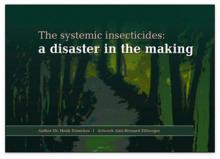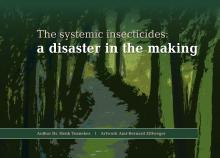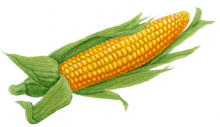Randolf Menzel - Wie Pestizide (Neonicotinoide) die Navigation, die Tanz-Kommunikation und das Lernverhalten von Bienen verändern
Wir verwenden ein spezielles Radargerät, um den Flug von einzelnen Bienen über Kilometer zu verfolgen. Das Design der Versuche zum Studium ihrer Navigationsleistungen besteht darin, Bienen nach einer Dressur auf einer Futterstelle oder nach dem Verfolgen einer Tänzerin am Stockausgang mit einem Transponder auszustatten und an einer anderen Stelle innerhalb ihres explorierten Areals freizulassen. Sie führen dann zuerst einen Vektorflug durch, der sie entweder zum Stock zurück gebracht hätte (wären sie nicht versetzt worden) oder zu der im Tanz angegebenen Futterstelle. Danach führen sie einen Suchflug durch, von dem sie auf direktem Flug zum Stock zurückkehren. Die Experimente sind so angelegt, dass die Bienen sich dabei nicht nach einem Horizontprofil oder einer Landmarke in der Nähe des Stockes, sondern ausschließlich nach der Bodenstruktur orientieren können. Wir weisen nach, dass das Navigationsgedächtnis der Bienen am besten als eine kognitive Karte beschrieben werden kann. Subletale Dosen von Neonicotinoiden stören selektiv die Heimflugphase, die auf der Verwendung dieses kartenartigen Gedächtnisses beruht, sodass die Tiere dann nicht mehr sicher zum Stock zurückfinden. Eine chronische Aufnahme von Thiacloprid reduziert die Sammelaktivität und die Tanzkommunikation.










